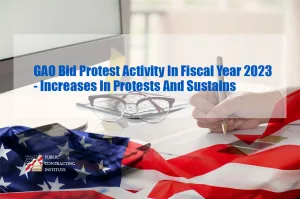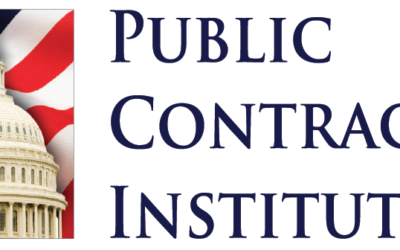
The Government Accountability Office (“GAO”) released its annual bid protest report to the Congress for fiscal year 2023 on October 26, 2023 (B-158766). The GAO actually received 2,025 protests in fiscal year (“FY”) 2023 but dismissed or immediately denied or dismissed a substantial number of them, while actually considering and issuing decisions on 608 protests, known as “merit decisions.” This was a 22% increase compared to FY 2022.
The GAO sustain rate rose only slightly from 13 percent in FY 2022 to 31 percent in FY 2023. These figures were adjusted to remove 119 duplicate (multiple) protests and B-numbers in two protests–Systems Plus, Inc. et al, B-419956, June 29, 2023 and Phoenix Data Security, Inc. et al, B-419956.200 et al, July 10, 2023. GAO’s two year average sustain rate in FY 2022-2023 was 13.5 percent. This compares with a two year average sustain rate of 9.71 percent in bid protests during calendar year 2021-2022 before the Court of Federal Claims (information given in a speech by Judge Patricia Campbell-Smith last year).
The other key GAO bid protest statistics for fiscal years 2019-2023 were as follows:
GAO Bid Protest Statistics for Fiscal Years 2019-2023
| FY2019 | FY 2020 | FY 2021 | FY 2022 | FY 2023 adjusted | |
| Merit decisions | 587 | 545 | 581 | 455 | 489 |
| Sustained | 77 | 84 | 85 | 59 | 69 |
| Sustain rate | 13% | 15% | 15% | 13% | 14% |
| Effectiveness rate | 44% | 51% | 48% | 51% | 57% |
| Alternative Dispute Resolution (ADR) cases | 40 | 124 | 76 | 74 | 69 |
| ADR success rate | 90% | 82% | 84% | 92% | 90% |
| Hearings | 2% (21 cases) | 1% (9 cases) | 1% (13cases) | 0.27% (2 cases) | 2% (22 cases) |
The “effectiveness rate” rose somewhat, from about 51 percent in 2022 to 57 percent in 2023. These are protests where the protester obtained some form of relief from the agency, either as a result of voluntary agency corrective action or the protest being sustained.
The percentage of cases where the GAO conducted a hearing remained small—generally only 1 or 2 percent of the cases.
GAO also reported that there were no instances where a federal agency did not fully implement a recommendation made by the GAO. Also, during 2023, the GAO issued final decisions within 100 days after all protests that were submitted, as required by the Competition in Contracting Act, 31 USC § 3554(e)(2).
Finally, the GAO reported on the most prevalent reasons for sustaining protests that were actually resolved on the merits in FY 2023. These were:
- Unreasonable technical evaluation
- Flawed selection decision
- Unreasonable cost or price evaluation
The GAO also noted that a significant number of protests it received did not reach a decision on the merits because agencies voluntarily took corrective action rather than defend the protest on the merits. Agencies need not and do not report any of the many reasons they decide to take voluntary corrective actions.
For other helpful suggestions on government contracting, visit:
Richard D. Lieberman’s FAR Consulting & Training at https://www.richarddlieberman.com/, and Mistakes in Government Contracting at https://richarddlieberman.wixsite.com/mistakes.


